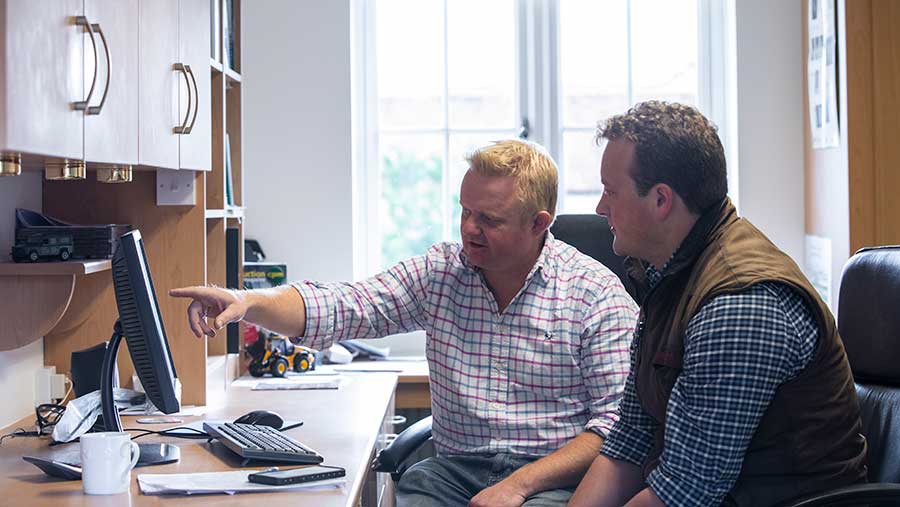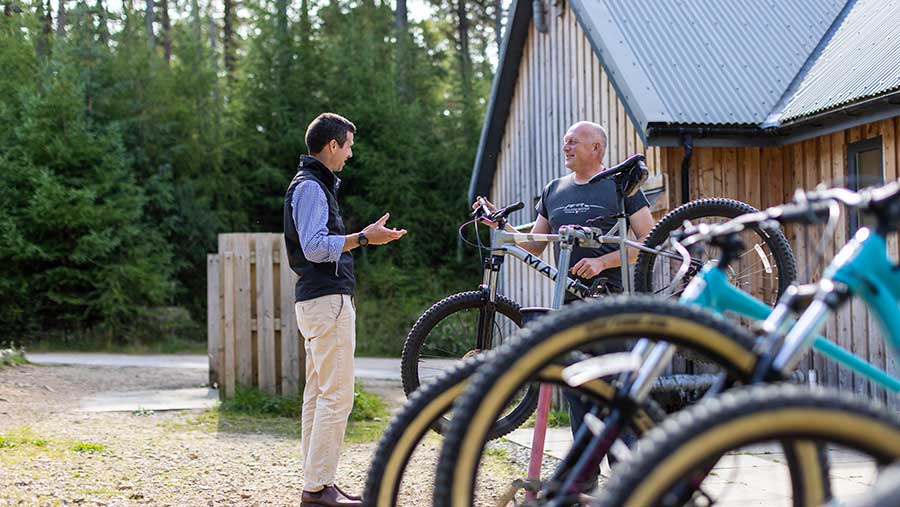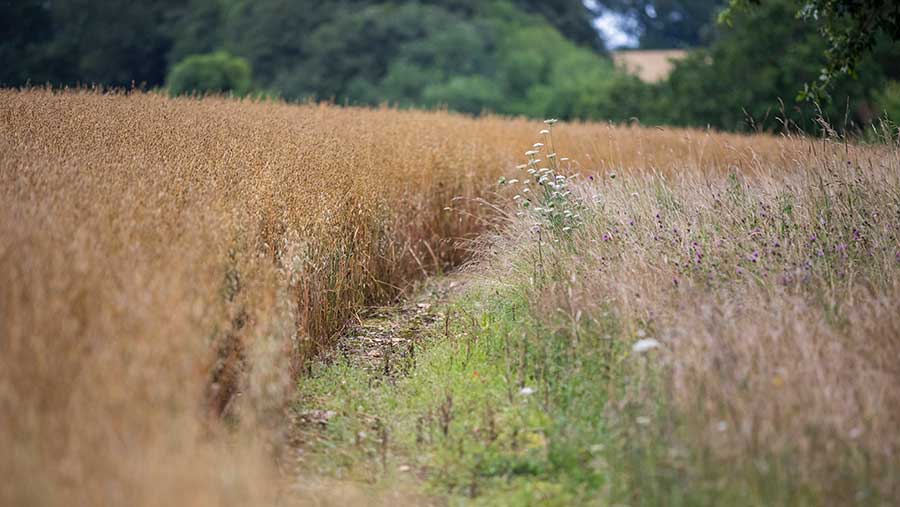Advertiser content
5 grants for farmers to consider applying for now
 © Strutt & Parker
© Strutt & Parker A complex web of grants and other support schemes is currently on offer to farmers to help increase productivity, make their businesses more resilient and enhance the environment.
But farmers often report it is difficult to keep track of what is available, as many of the schemes have similar sorts of names and the application windows for each of them can be relatively short.
“There is some valuable funding on offer, but it is hard for farmers to work out what is relevant to them and how different schemes interact with each other,” says Jonty Armitage of Strutt & Parker. “Everything takes quite a bit of navigating.”
Strutt & Parker highlights five current schemes that farmers may want to consider entering:
Rural England Prosperity Fund (England)
The £110m Rural England Prosperity Fund (REPF) offers funding for farmers, landowners and rural businesses in England who are looking to diversify or develop their businesses further.
It is the successor to schemes like the European-funded LEADER and Growth Programme which over the years has provided support to many farms and estates to develop food processing businesses, diversify into rural tourism or invest in farm equipment.
Essentially, the REPF will provide capital grants to:
- Support new and existing rural businesses to develop new products and facilities that will be of wider benefit to the local economy – this includes farm businesses looking to diversify income streams away from agriculture. The sort of projects which may be eligible for funding include the conversion of farm buildings to other business uses, particularly those which support the tourism industry, and the purchase of equipment for food processing. Some councils may also be willing to fund pieces of farm machinery, if the purchase helps to meet their other grant objectives such as helping the UK to meet its net zero targets.
- Support new and improved community infrastructure, providing essential community services and assets for local people and businesses to benefit the local economy.
The challenge for potential applicants is that the scheme is being delivered by local authorities, rather than centrally.
In total, 117 local authorities have been provided with a financial allocation and the money must be spent by 31 March 2025.
While the decentralised approach allows for localised decision-making – which can have its advantages – it also means that the scheme is being rolled out differently by every local authority.
Consequently, the value of the grants available, the timing of the application window, what the application process looks like and the priorities for funding is different in each region.

© Strutt & Parker
For example, some local authorities have set a maximum grant value of just £20,000, while others are offering grants as high as £300,000.
Some councils will also require any grants they offer to be match funded by the applicant.
Strutt & Parker is monitoring the rollout of the REPF across all 117 local authorities, so the team knows what grants are on offer in each region and the application process.
Calf Housing for Health and Welfare Grant (England)
Grants of up to £500,0000 are now available to farmers in England to support investment in upgraded calf housing.
The money is being made available through the new Animal Health and Welfare Infrastructure Grant, with the goal being to provide calf housing that offers a good ambient environment and facilitates social contact between animals.
Although the scheme is initially focused on co-funding new and upgraded calf housing, in time it will be extended to cover buildings for adult cattle, pigs and poultry.
The minimum grant on offer is £15,000 and the maximum is £500,000, with the money covering up to 40% of the eligible costs of a project.
The grant can pay for capital costs to build new, or upgrade existing, calf housing buildings.
The application process has three stages.
The first stage is using an online checker to check a project’s eligibility and how well it fits the funding priorities. The online checker closes on 30 November 2023.
The second stage involves completing an Ambient Environment Assessment form, so Defra can check the building will provide a suitable environment for the calves.
If these details are satisfactory, farmers will be invited to make a full application, where they will need to supply three quotes for any items valued at more than £5,000 and a letter of confirmation showing that advice has been sought from a vet.
We expect the scheme to be popular and given the total funding pot on offer is fairly limited at £10m, it will be important for applicants to focus on the funding priorities when putting together a submission.
Sustainable Farming Incentive (England)
The 2023 version of the Sustainable Farming Incentive (SFI) is now open for applications.
There are now 23 ‘actions’ on offer – twice the number originally planned by the government.
Each action has a number of different ‘sub-actions’ and farmers can choose their own combination of actions in a ‘pick and mix’ structure.
SFI actions and Countryside Stewardship (CS) options can be combined on the same parcels if the land is eligible for both schemes and the actions are compatible.
Payment rates range from £10 per 100m for managing one side of a hedgerow, to £129/ha for multi-species cover crops, and £589 for a nutrient management review.
There is a management payment of £20/ha for the first 50 hectares to cover participation costs.
The Rural Payments Agency (RPA) is rolling out the scheme in a controlled way, so anyone who is interested in joining the scheme needs first to register their interest by filling in a form.
The RPA will then invite farmers to make a full application.

© Strutt & Parker
Preparing for Sustainable Farming (Scotland)
The Preparing for Sustainable Farming Scheme has been running since 2022 and is designed to help prepare Scotland’s farmers for the new rural support scheme that is on its way.
It offers funding towards the cost of a carbon audit (£500), soil sampling and analysis (the actual cost of sampling and analysis of 20% of an applicant’s Region 1 land) and will pay £250 for a range of animal health and welfare interventions, such as faecal egg counts, screening for diseases and lameness assessments.
On a farmer’s first claim there may be a further £250 for ‘development activities’ – effectively to pay for the time spent learning about the best practice for soils and animal health.
There are limits to the amounts claimed and a carbon audit is essential in order to claim for the other options.
This funding will cease in 2025, as these measures will become part of the conditions for applying for the new rural support scheme being introduced by the forthcoming Agriculture Bill.
Forestry Grant Scheme Agroforestry measures (Scotland)
This summer the Scottish Government announced new measures as part of its Forestry Grant Scheme aimed at boosting agroforestry planting in Scotland.
The agroforestry payment grant rate was increased by 50% from £3,600/ha to £5,400/ha.
Agroforestry funding was also made available for planting fruit, nut and native trees and for additional tree protection measures, to allow cattle to graze within agroforestry projects.
To give farmers more opportunity to participate in agroforestry the planting thresholds have also been updated.
Provided by
With over 125 years of experience, Strutt & Parker has deep roots and a comprehensive understanding of what makes the rural economy work and the legislation that is driving change. Our rural teams offer a unique mix of financial, land and property expertise and can advise you across every service and discipline from farming, forestry and viticulture to natural capital, renewable energy and biodiversity.
